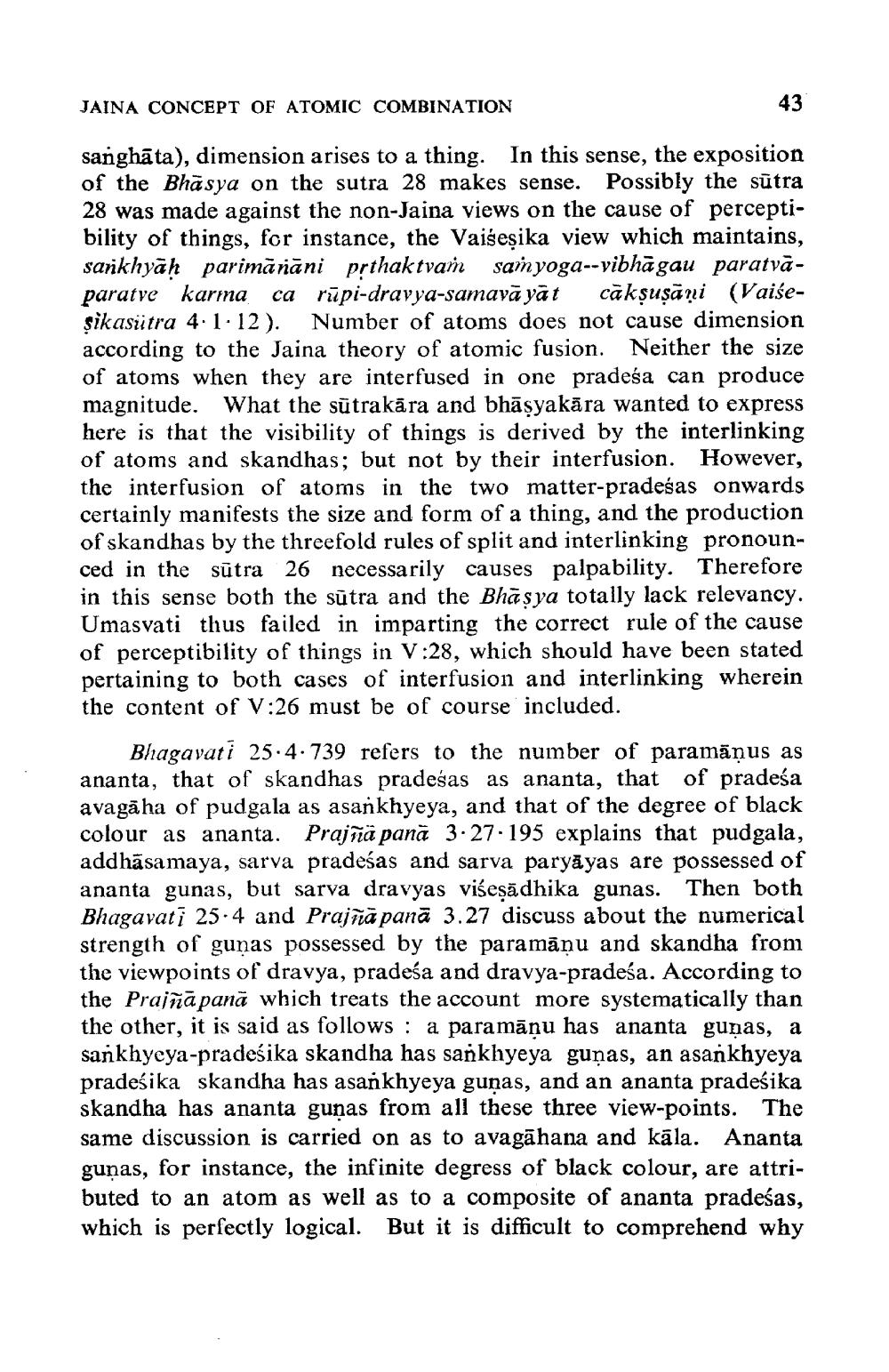________________
JAINA CONCEPT OF ATOMIC COMBINATION
43
sanghāta), dimension arises to a thing. In this sense, the exposition of the Bhāsya on the sutra 28 makes sense. Possibly the sūtra 28 was made against the non-Jaina views on the cause of perceptibility of things, for instance, the Vaiśesika view which maintains, sarkhyāh parimānāni prthaktvam saryoga--vibhāgau paratvaparatve karma ca rūpi-dravya-samavā yāt cāksuşāņi (Vaiseşikasütra 4.1.12). Number of atoms does not cause dimension according to the Jaina theory of atomic fusion. Neither the size of atoms when they are interfused in one pradeśa can produce magnitude. What the sūtrakāra and bhāsyakāra wanted to express here is that the visibility of things is derived by the interlinking of atoms and skandhas; but not by their interfusion. However, the interfusion of atoms in the two matter-pradeśas onwards certainly manifests the size and form of a thing, and the production of skandhas by the threefold rules of split and interlinking pronounced in the sūtra 26 necessarily causes palpability. Therefore in this sense both the sūtra and the Bhas ya totally lack relevancy. Umasvati thus failed in imparting the correct rule of the cause of perceptibility of things in V:28, which should have been stated pertaining to both cases of interfusion and interlinking wherein the content of V:26 must be of course included.
Bhagavati 25.4.739 refers to the number of paramāņus as ananta, that of skandhas pradeśas as ananta, that of pradesa avagāha of pudgala as asankhyeya, and that of the degree of black colour as ananta. Prajsiä panā 3.27-195 explains that pudgala, addhāsamaya, sarva pradeśas and sarva paryāyas are possessed of ananta gunas, but sarva dravyas višesādhika gunas. Then both Bhagavati 25.4 and Prajitā panā 3.27 discuss about the num strength of gunas possessed by the paramānu and skandha from the viewpoints of dravya, pradeśa and dravya-pradeśa. According to the Prajñā panā which treats the account more systematically than the other, it is said as follows: a paramānu has ananta gunas, a sankhyeya-pradeśika skandha has sankhyeya gunas, an asankhyeya pradeśika skandha has asankhyeya gunas, and an ananta pradeśika skandha has ananta gunas from all these three view-points. The same discussion is carried on as to avagāhana and kāla. Ananta guņas, for instance, the infinite degress of black colour, are attributed to an atom as well as to a composite of ananta pradeśas, which is perfectly logical. But it is difficult to comprehend why




